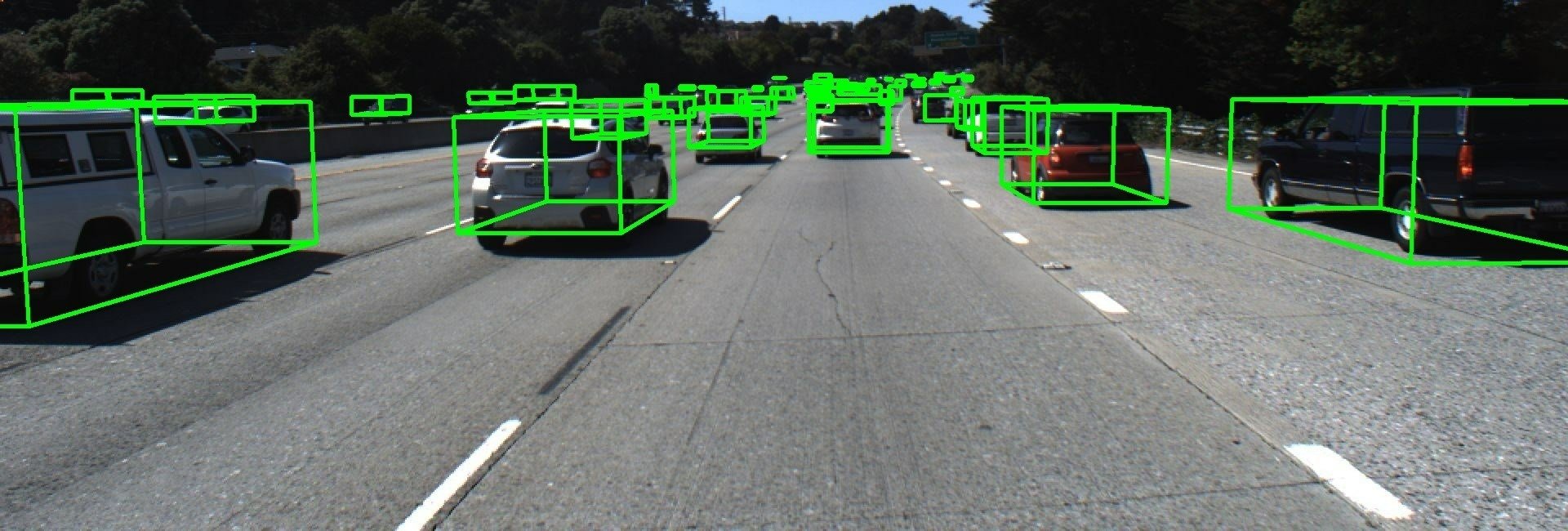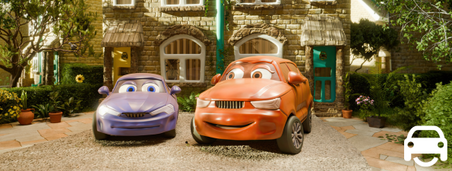How Technology in Cars is Saving Lives

Road traffic deaths in the UK in the modern era peaked at nearly 8000 deaths in 1966. By 1980 the figure was still only just below 6000. It wasn’t until the 1990s that the decline thankfully steepened, dropping by nearly a third from 5217 to 3409 by the year 2000.
It can't be a coincidence that the 90s saw the widespread introduction of drivers’ aids and car safety systems like ABS (Anti-lock brakes) and traction control.
The Noughties saw an even bigger 46% drop to 1857 fatalities. However, the figure has plateaued over the last decade sadly hovering around 1700 deaths per year. Although it’s worth pointing out that conversely traffic levels continue to increase steadily, up 29% since 1993, (apart from a blip in 2020 due to the pandemic). Meanwhile the number of accidents overall has dropped by 64% since 2000 to around 91,000 a year.
World Remembrance Day & Road Safety Week
The World Day of Remembrance for Road Traffic Victims, an initiative by the European Federation of Road Traffic Victims (FEVR) in 1995, and which was later adopted by UN General Assembly Resolution in 2005, as an “appropriate acknowledgement for victims of road traffic crashes and their families,” takes place on 21st November 2021.
It seeks to remember those killed or seriously injured and advocates better support for them and their families, acknowledges the work of the emergency services and promotes anything that can further reduce and prevent deaths and injuries. Show your support at #WDoR2021
The day also coincides with Road Safety Week in the UK (15-21 November 2021), a huge national campaign to encourage millions through schools, organisations and communities to take action on road safety, and this year in particular honour 'Road Safety Heroes'. Organised by Brake (a free support service for victims of road accidents), you can get involved at https://www.brake.org.uk/road-safety-week.
What are car manufacturers doing?
Apart from the great work of these organisations and all the emergency services involved, it’s also fair to say, as alluded to above, that car manufacturers, led by technology often from motor racing disciplines such as Formula 1, have contributed significantly to the reduction of road deaths and injuries for those in cars and for pedestrians. Here’s some of the key safety features we have to thank for that.
Better Control
If you slam hard on the brakes in a car from an era before ABS was introduced, this is what happens: the front wheels lock up instantly and the tyres skid. At this point they are no longer capable of steering the vehicle, and braking effectiveness is dramatically reduced. You’re essentially a passenger waiting for a collision to happen.
Do the same in a car equipped with ABS and the brake pedal will feel like it’s snapped and start rattling. In fact, the brakes are being pumped, simulating ‘cadence braking’, which means they do not lock up. Thus you can continue to slow the car more effectively, but also steer around any obstacle in your path. Introduced widely from the 1980s, this is quite possibly one of the greatest safety devices fitted to cars after the seatbelt became commonplace in the 1960s.
ABS further evolved into traction control and it’s more advanced version, ESP (electronic stability control) which is able to use sensors and brake control systems on all four wheels to detect if a tyre breaks traction and is likely to cause the car to slide or skid. It avoids this by transferring torque to the wheels with grip.
Systems like these continue to evolve, with features such as torque vectoring which can ensure better grip and agility during hard cornering. Passive and active rear-wheel steer systems not only make tight manoeuvring easier but allow smoother and more stable high-speed lane changes.
Improved Visibility
We’ve come a long way from reversing cameras and parking sensors. Now there are 360-degree or ‘birds eye’ view cameras, some cars will even show you what’s underneath the car, rear cross-traffic alert systems take the dangers out of reversing back onto a street, and of course blind-spot monitors will stop you swerving into the path of another vehicle.
Even when you’re not looking, some cars are equipped with cameras programmed to detect obstacles and also distances, alerting you if you if you’re too close to the vehicle in front relative to the speed you’re doing.
Going further, built-in GPS technology and connectivity is not only able to detect traffic and accidents up ahead (as well as alert you of speed limits and restrictions), but also adjust the suspension and performance to suit different terrain and environments. Some even have cameras that watch for, analyse and configure the suspension to cope with the severity of potholes and bumps in the road ahead.
Autonomous systems
Experts mostly agree we’re still decades away from cars that can comprehensively and competently drive themselves in any situation, and that’s down to AI (artificial intelligence) learning not being up to the task yet. However, much of the technology they will rely on, such as cameras, radars and lidars (which use lasers) as well as drive-by-wire systems that can commandeer the car’s controls, are already fitted to many of today’s motors.
And they’re already saving lives by steering correction if you’re veering out of lane, braking automatically in emergencies, monitoring the behaviour of other road users and reacting accordingly. Adaptive cruise control systems can brake and accelerate with the traffic flow and some cars can even park themselves.
Your vehicle could also be watching you. Sensors in the steering wheel and cameras on the dashboard monitoring eye and head movements can ensure your attentiveness and warn you when you need a break. A few systems are even able to recognise if a driver has passed out or fallen asleep, park the car safely and call for help.
Crash Protection
You often hear people say of modern cars ‘well they don’t build them like they used to!’ citing how a minor contretemps in a car park saw part of their brand-new ride essentially disintegrate. Admittedly this does mean expensive repairs and frequent write-offs. Nonetheless, anyone who’s been in an accident in a modern car will be praising the gods of automotive engineering that indeed, they really ‘don’t build them like they used to’.
This is because modern safety cages are designed to stay intact at all costs, to preserve the lives and limbs of the passengers inside, and the rest of the vehicle is deliberately developed to pretty much sacrificially self-destruct. By doing so, the dissipation and absorption of energy ensures a lessened impact on the occupants.
Combine this with multiple airbags, self-tensioning seatbelts, fuel cut-off systems, safety glass that doesn’t shatter and automatic unlocking of doors and it all means that even if a car resembles little more than a twisted, mangled mess of metal and materials after a crash, the people inside are far more likely to survive and even walk away from the wreckage relatively unharmed in the best cases. Compare that to our forebears riding in tank-like automobiles that brushed off minor incidents with barely a scratch, but folded and crushed those within if involved in a major collision.
The very latest cars even detect an impending impact and can adjust their stance, for example along with side-impact protection beams embedded in doors, some top end cars will actually, and instantly, lift the car to the highest suspension setting so that the lower chassis structure will take the brunt of the force in a side impact rather than the doors, thereby reducing the risk of intrusion into the cabin. Extraordinary.
Pedestrian Safety
Other road users have not been forgotten either. From cameras and sensors that detect pedestrians and cyclist etc, to greatly reducing the chance of death and debilitating injury in the event of a collision. It’s the reason new cars look how they do at the front, and why, for example cars no longer have bonnet mascots and pop-up lights.
There is now a mandated distance between the softer bonnet and the top of the hard engine block to avoid severe head injuries, some bonnets even lift slightly on impact thanks to explosive bolts and hinges, and a few manufacturers have actually introduced pedestrian airbags.
What we can do
The UK has one of the lowest rates of road deaths in the world at 2.9 per 100,000 inhabitants, compared to the United States at 12.4 and the worst which was Liberia at 35.9. Even so, there’s scope for improvement.
While the campaigners and car makers are definitely doing their bit to improve road safety, the rest is still up to us, the road users (whether in a car, on a bike or afoot) to improve our awareness and attentiveness, and mostly importantly maintain consideration and courtesy towards other road users, in order to help pull down that fatality number to well below 1700. Together, let’s do our bit to reduce unnecessary suffering, anguish and tragic loss of lives still happening on our roads.












